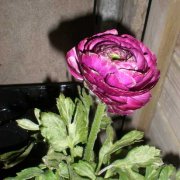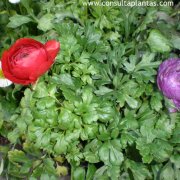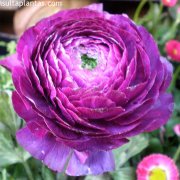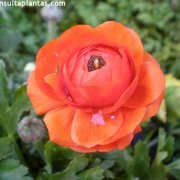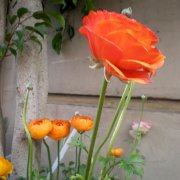Care of the tuberous plant Ranunculus asiaticus or Persian buttercup |
|
The genus Ranunculus, family Ranunculaceae, includes 600 species of perennial herbaceous plants native to the Northern Hemisphere. Some species are: Ranunculus asiaticus, Ranunculus gramineus, Ranunculus aconitifolius, Ranunculus cortusifolius, Ranunculus bulbosus. Common names: Persian buttercup, Garden ranunculus. This species is native to the eastern Mediterranean. They are herbaceous plants with tuberous roots that reach 50 cm (19.68") in height. The leaves are deep green and lobed. The flowers can be single or double and yellow, white, red, pink, purple, etc. They bloom in spring or winter. They are used next to ponds, in shaded rock gardens, in the shade of trees and shrubs and in pots for balconies, terraces and patios. Ranunculus asiaticus needs semi-shade exposure in hot climates (with sun early in the day) and full sun in colder climates. They resist well the cold between 0-10 ºC (32-50 ºF). The ideal soil should be clayey-sandy; add organic matter several months before planting, which is done in late summer if the weather is warm and in late winter if the weather is cold. The tuberous roots are spider-shaped and should be planted with the tip facing upwards at a depth of 10 cm (3.93"). Water frequently but without flooding the substrate; reduce watering when flowers wilt. When the leaves turn yellow, they can be cut 2 cm (0.78") from the roots and these can be left buried or stored in a dry and cool place (like bulbs). Fertilize every 20 days from early spring to the end of flowering with mineral fertilizer. They are propagated from seeds (it's not a simple process) or by division of the roots. |
Images of the tuberous plant Ranunculus asiaticus or Persian buttercup |
Find plants
Ranunculus asiaticus or Persian buttercup | Care and Growing
© 2024 FavThemes
